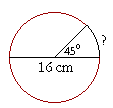
In the vast realm of geometry, the concept of rotational symmetry is one that invites both inquiry and exploration. When confronted with the question, “Which angle of rotation will carry the figure onto itself?” one might feel compelled to ponder not only the mathematical implications but also the inherent aesthetic beauty of symmetrical patterns. This inquiry serves as an engaging puzzle for mathematicians, artists, and enthusiasts alike. To unravel this intriguing question, we shall delve into the foundational principles of rotational symmetry, investigate its mathematical underpinnings, and navigate through illustrative examples that reveal the elegance of this concept.
To begin with, it is essential to understand what is meant by rotational symmetry. A figure exhibits rotational symmetry if, upon rotating it about a particular point—typically the centroid or center of the figure—it can be superimposed onto itself at certain angles of rotation. These specific angles are the very crux of our exploration. Imagine a classic example: the square. Upon rotation, the square can be realigned with its original placement at 90 degrees, 180 degrees, 270 degrees, and finally, at 360 degrees, thus returning to its original orientation. As we will uncover, this multiplicative relationship between angles and the number of symmetries they yield is a defining characteristic of many geometric forms.
Now, let us consider the question of how to ascertain the angle of rotation that will yield this self-overlapping effect. A great starting point is to examine the number of rotational symmetries a figure possesses. For instance, the square harbors four distinct rotational symmetries. The mathematical guideline for determining the angle of rotation that will carry a figure onto itself can be succinctly summarized: it is the total angle of rotation (360 degrees) divided by the number of rotational symmetries. Thus, in the case of a square, we calculate 360 degrees divided by 4, resulting in a 90-degree angle of rotation as the smallest angle that will uphold its symmetry.
To extend our exploration, it is fascinating to analyze figures with varying complexities and symmetries. Take, for example, the equilateral triangle. With three rotational symmetries, we again apply our arithmetic principle; dividing 360 degrees by 3 yields a 120-degree angle of rotation. Herein lies a captivating observation: not only does the equilateral triangle exhibit elegant symmetry, but it also encapsulates the harmonious interplay of both mathematics and nature, echoing principles found in various natural phenomena.
But what of more intricate shapes? The regular hexagon presents an intriguing case study. Composed of six equal sides and angles, each rotation of 60 degrees seamlessly invisibly rotates the hexagon, allowing it to overlap perfectly with its initial orientation. Therefore, we find ourselves with yet another instance of rotational symmetry. It is paramount to underscore that the more sides or vertices a regular polygon contains, the smaller the angle of rotation required to achieve symmetry. Thus, we observe a pattern: as we engage with polygons of increasing complexity, we encounter a proportional relationship between the number of sides and the angle of rotation.
While the mathematical determination of these angles is intellectually stimulating, the implications extend beyond mere calculation. The presence of rotational symmetry permeates various domains: architecture, art, biology, and even engineering. Structures such as bridges and buildings often utilize these principles to achieve both aesthetic appeal and practical stability. For instance, the famous Parthenon in Athens employs symmetry not only to achieve visual balance but also to create a sense of order and harmony in its design.
In the artistic domain, artists have long harnessed the power of rotational symmetry to evoke emotional resonance. Consider the kaleidoscopic patterns often seen in artwork; every twist and turn reveals a fresh and compelling iteration of the original motif, delighting the viewer’s eye and stimulating the imagination.
As we progress to further consider rotational symmetry, we encounter a range of mathematical objects that go beyond simple polygons. The concept extends to three-dimensional shapes, such as spheres and cylinders, which possess infinite rotational symmetries. A sphere, for example, can be rotated any degree around its center without altering its appearance, making it an archetype of perfect symmetry. The implications of these concepts shift our understanding of space, form, and aesthetics.
Ultimately, the quest to find which angle of rotation will carry a figure onto itself is a microcosm of a broader intellectual pursuit—a transcendence beyond numbers and angles, inviting the mind to reflect on the interconnectedness of geometry, nature, and human creativity. The challenge of determining these rotational symmetries invites problem solvers to engage in a road of inquiry, fostering a deeper appreciation for the elegance and order that underlies our world.
In conclusion, the investigation of rotational symmetry serves as an engaging interplay between mathematics and aesthetics. As we navigate through various geometric forms and their corresponding angles, we unveil a rich tapestry of relationships that enhance our understanding of both art and science. The possibilities are boundless, and the journey through this domain beckons at every angle of exploration.
